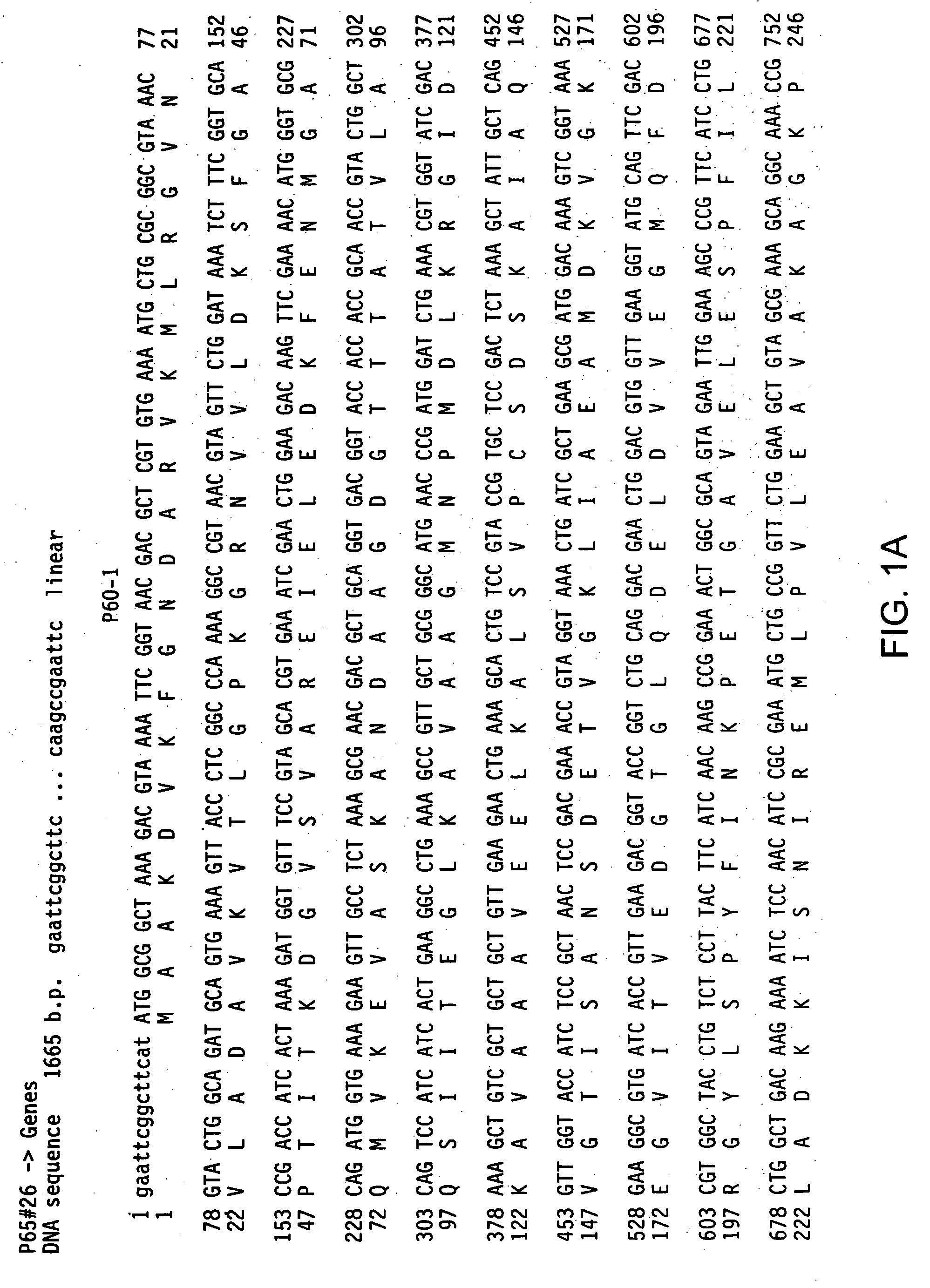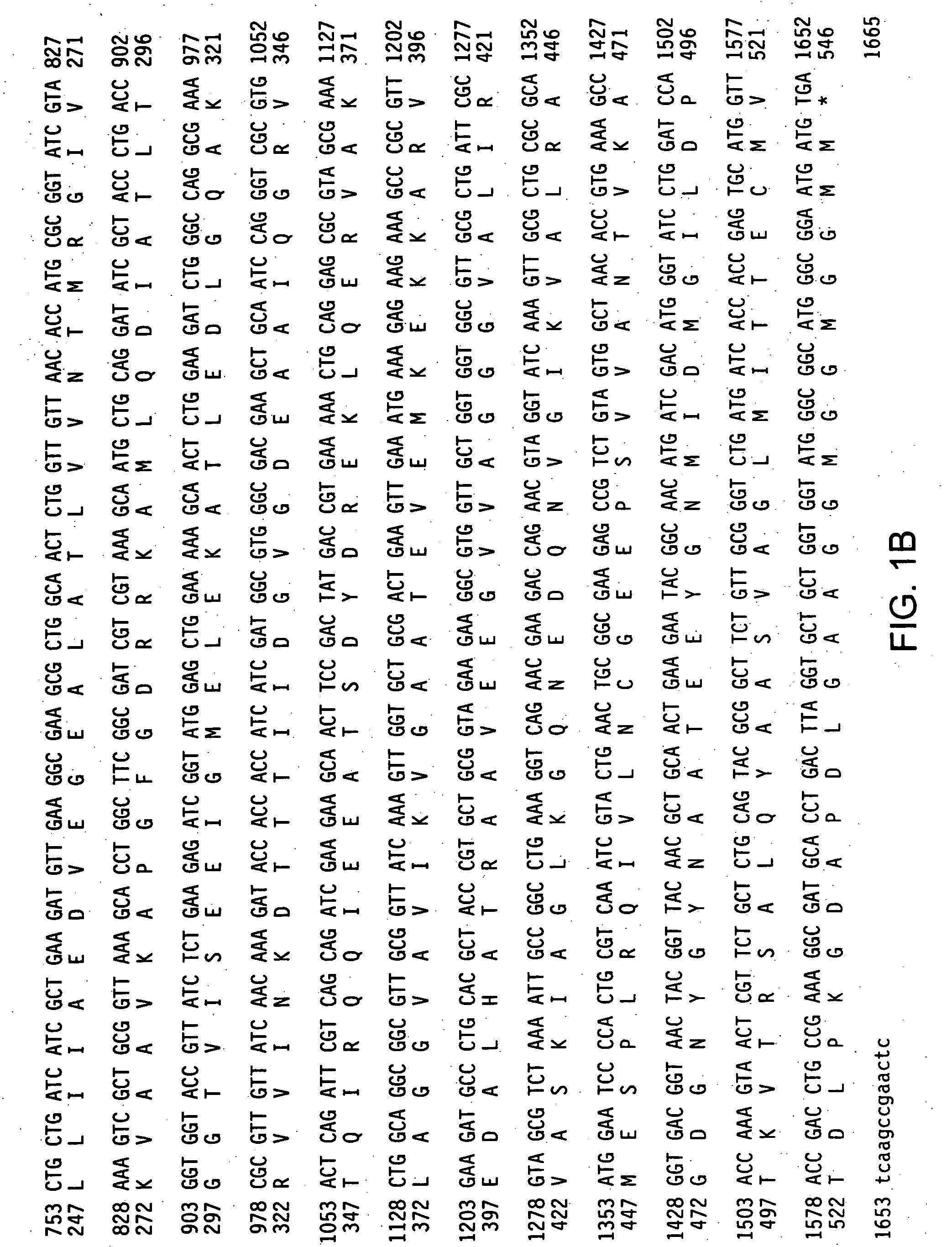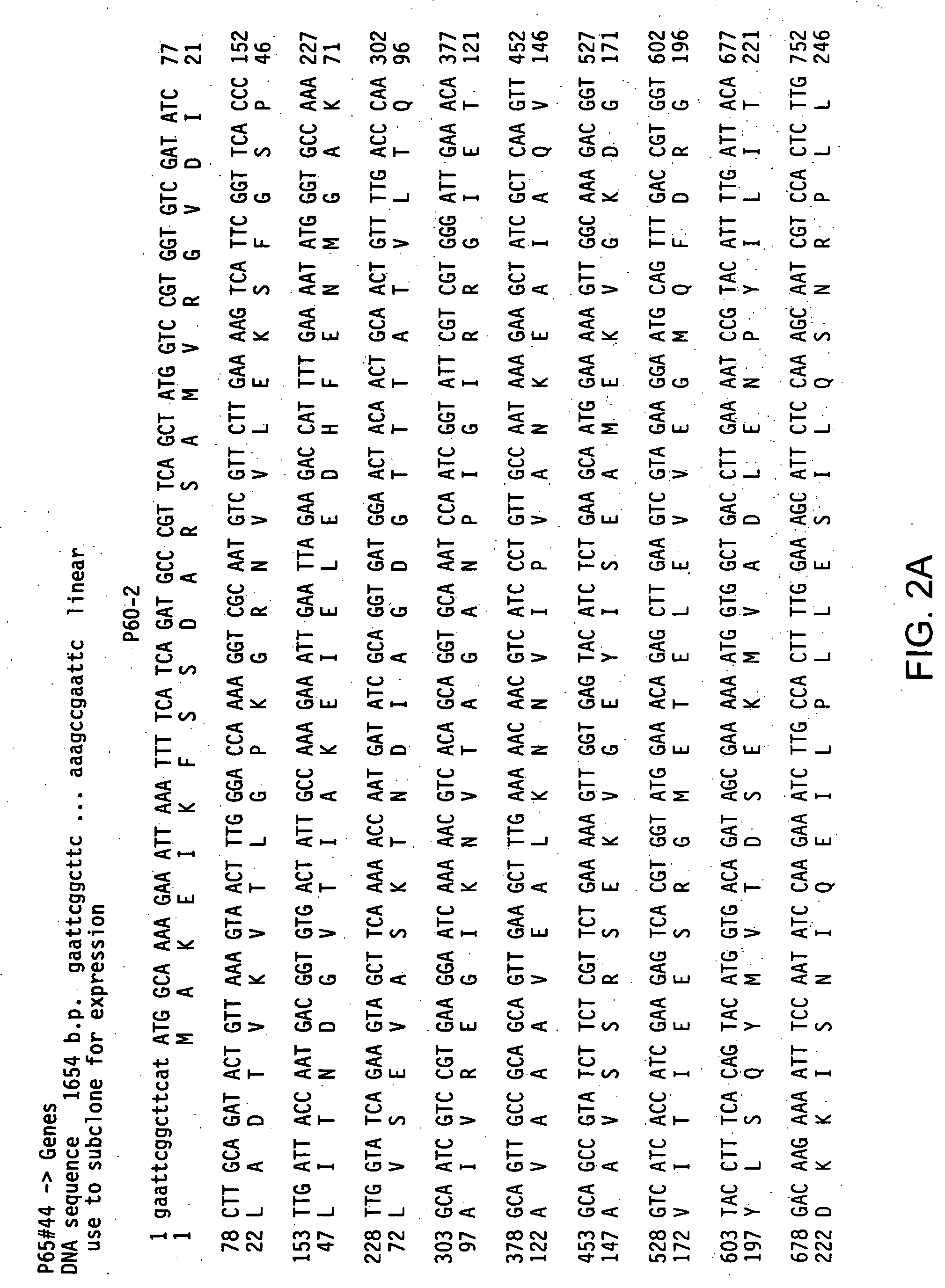Streptococcal heat shock proteins of the Hsp60 family
a technology of streptococcal and heat shock protein, which is applied in the field of streptococcal hsp60 proteins, can solve the problems of insufficient protection, inability to prevent morbidity and mortality, and the antibiotic treatment of infectious diseases caused by encapsulated bacteria such as pneumococcus not always effective,
- Summary
- Abstract
- Description
- Claims
- Application Information
AI Technical Summary
Benefits of technology
Problems solved by technology
Method used
Image
Examples
example 1
Isolation of Genes for Streptococcus pneumoniae and Streptococcus pyogenes Hsps
[0128] Genomic DNA from Streptococcus pneumoniae (ATCC6314) and Streptococcus pyogenes (ATCC12344), prepared by a routine method, was obtained from Dr. Lee Weber, University of Nevada at Reno.
[0129] Hsp60 DNA sequences were isolated by use of the polymerase chain reaction. Primers were designed based on N- and C-terminal homology of known Hsp60 sequences from other organisms. DNA amplifications of Streptococcal DNA were carried out using Taq polymerase (Perkin-Elmer). About 20 different primer pairs were tested using different reaction conditions. One pair (pair 1) was identified that was capable of amplifying Hsp60-1 genes, and a second (pair 2) that permitted amplification of Hsp60-2 sequences. Reaction mixtures capable of amplifying Hsp60 sequences contained, in a total volume of 50 μl, 0.5 μg of genomic DNA, 50 pmoles of each of a pair of degenerate primers, 500 μM each of dNTPs, 1×PCR buffer (Perki...
example 2
Nucleotide Sequence Analysis of Streptococcal Hsp60
[0134] Inserts present in recombinant pCRII-based clones were sequenced using a CircumVent sequencing kit (New England Biolabs), 35S-dATP and primers listed below. Multiple clones containing particular Streptococcal Hsp60 genes were sequenced: sequences were obtained from five clones, derived from three independent PCR reactions, of the Streptococcus pneumoniae Hsp60-1 gene, two clones, derived from single PCR reactions, of the Streptococcus pneumoniae Hsp60-2 gene, four clones, derived from three independent PCR reactions, of the Streptococcus pyogenes Hsp60-1 gene, and two clones and a portion of a third clone, derived from single PCR reaction, of the Streptococcus pyogenes Hsp60-2 gene. Sequencing reactions were fractionated on denaturing 6% polyacrylamide-8M urea gels (60 cm length), and the gels were dried and exposed for autoradiography. Autoradiographs were read manually, and sequence data were assembled and compared to othe...
example 3
Expression of Recombinant Streptococcal Hsp60
[0138] Inserts (Hsp60 genes) were excised from recombinant pCRII-based plasmids with restriction enzymes NdeI and EcoRI. NdeI cut inside forward PCR primers #1F or #2F, and EcoRI cut a short distance downstream from reverse PCR primers #1R or #2R in the polylinker region of vector PCRII. DNA fragments including Hsp60 gene sequences were fractionated on low-melting-point agarose gels, purified from the gels and ligated into NdeI / EcoRI double-digested pET28a(+) vector DNA (Novagen). Ligation reactions were used to transform competent Escherichia coli DH5a cells, and transformants were selected on Luria Broth plates containing 30 μg / ml of kanamycin D. DNA was isolated from single colonies using a standard alkaline lysis method, and the presence of correct inserts verified by digestion with NdeI and EcoRI and agarose gel electrophoresis. The resulting expression plasmids contained either a Streptococcus pneumoniae Hsp60-1 gene (referred to a...
PUM
| Property | Measurement | Unit |
|---|---|---|
| Immunogenicity | aaaaa | aaaaa |
Abstract
Description
Claims
Application Information
 Login to View More
Login to View More - R&D
- Intellectual Property
- Life Sciences
- Materials
- Tech Scout
- Unparalleled Data Quality
- Higher Quality Content
- 60% Fewer Hallucinations
Browse by: Latest US Patents, China's latest patents, Technical Efficacy Thesaurus, Application Domain, Technology Topic, Popular Technical Reports.
© 2025 PatSnap. All rights reserved.Legal|Privacy policy|Modern Slavery Act Transparency Statement|Sitemap|About US| Contact US: help@patsnap.com



